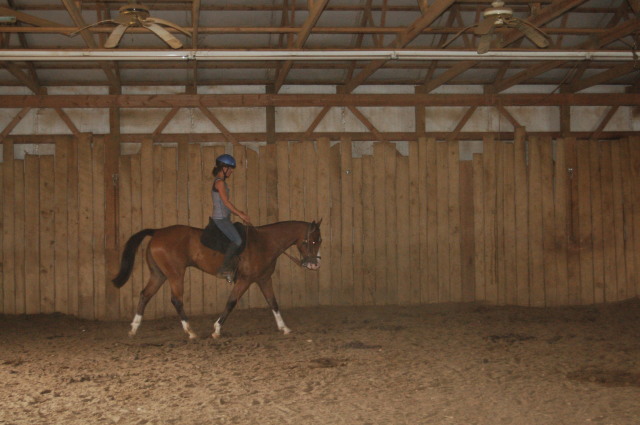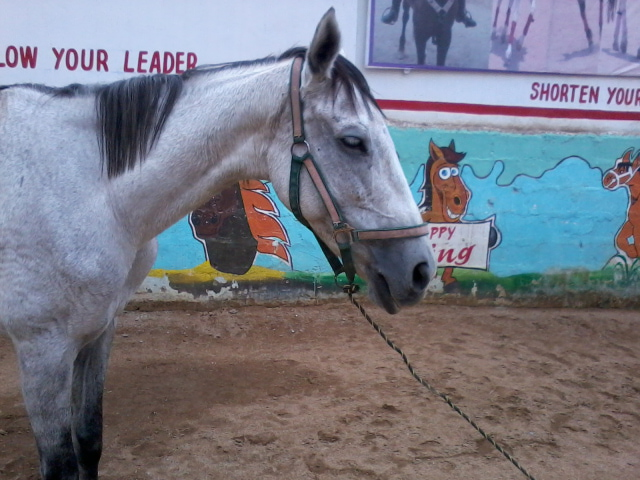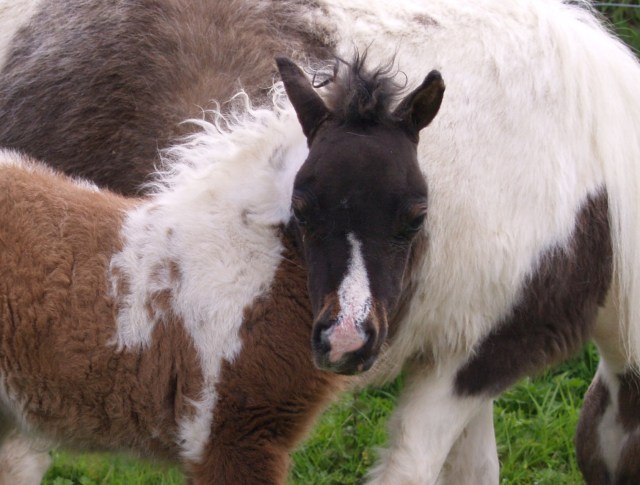QuestionHi,
I bought a thoroughbred Shetland mare 12 months ago.(Beginning of July) She was bred to a shetland stallion on 2nd June, and remained in a large paddock with him until the end of June. My neighbours cob stallion broke in to our paddock around the 6/7th July. I wasn't concerned at the time, since I assumed the shetland was pregnant, and my cob mare wasn't in season at the time. Unfortunately, my shetland is still pregnant, udder extending towards her belly, HUGE belly, but colostrum still clear. I'm suspecting that the cob impregnated my shetland, which would make her due at the beginning of next week - seems to fit her pre-foaling symptoms. I'm terrified! This will be my first foaling, and I'm really concerned at the thought of a 36" (9 hands) mare foaling to a 15 hand stallion. Help! My vet lives 30 miles away, so getting hold of him in a hurry for an emergency just isn't gonna happen quick enough. She has had a couple of foals before, so, is it likely she might manage a natural delivery? If not, what can I do for her? Thanks for taking the time to read this.
Noreen
Answerhi noreen,
many vets say a foal will not be much bigger then the mare. if she is pregnant by the cob stallion and has had babies before then she should be ok. to be on the safe side though try to find a vet near you to be there when the foal is born. to make sure you are there from beginning to end set up survalence cameras in the horses stall. if she does not have a stall make one. a 24'' by 24'' is the perfect size. when she is starting to foal just leave her alone. let her do what she knows to do. if you see her having trouble giving birth then quickly wash your hands ( perferably with iodine) and try to help the baby out. if the foal needs to be pulld out grab it by its legs. this will prevent the baby from getting hurt.
The classical signs of approaching parturition include udder
development beginning 2 to 6 weeks before foaling, then milk let
down into the teats (teat distension) 4-6 days prior to
parturition. Due to oozing out of some of the colostrum, the ends
of the teats become covered over and the mare is said to be
"waxing", which occurs 1-2 days before foaling. At this time,
some mares will have occasional dripping or streaming of
colostrum. If this streaming is continuous, the colostrum should
be collected and stored for possible use with the newborn foal.
In addition to changes associated with the mammary gland,
muscular relaxation in the pelvic region occurs progressively
during the last 7-14 days of gestation and the mare's vulva
begins to relax during the final days of gestation.
Parturition is typically broken down into three stages. Stage I,
normally lasting 1 to 4 hours, reflects the initial uterine
contractions and final positioning of the foal for delivery.
These contractions will make the mare appear nervous and
uncomfortable. Typically the mare will exhibit the following
behavior:
Restlessness, indicated by frequent interruptions in eating. She
may stop chewing feed already in her mouth or she may pace the
stall.
Pawing the bedding or ground in different places as if looking
for something, and switching her tail.
Getting up and down frequently.
Sweating in the flanks.
Urinating frequently.
These indicators are far from infallible and in some mares, the
appearance of the water bag (the outer membranes surrounding the
foal) may be the first signs of parturition observed.
During this stage, the mare can be prepared for foaling, if
desired. This could include washing the mare's vulva and udder
with warm water and wrapping her tail with a clean bandage. If a
veterinarian is readily accessible, this is a good time to notify
them of the approaching parturition so they can be prepared in
the event of any problems.
Stage II is the most critical time, as this is when the foal
actually appears. If foaling is proceeding normally, the mare
should be left on her own. What is normal? This second stage,
hard labor and foal delivery, is usually completed in 10 to 30
minutes. Close observation, without interference unless
absolutely necessary, is important throughout this stage. Some
mares object to assistance during this time. A viewing window or
video camera system out of the mare's sight is preferred to avoid
disturbing the parturition process.
The mare will experience heavy abdominal contractions and lie
flat on her side. Her water bag will appear and should break on
its own during the first part of Stage II.
Although dystocia (foaling difficulty) is uncommon in mares
(<10%), it is important the foaling attendant be familiar with
both normal and abnormal foal presentations. In a normal
presentation, both front feet with heels down will appear first,
and usually one foot will be slightly ahead of the other (Figure
1). The feet are followed by the nose and head resting between
the knees; the back of the foal is toward the back of the mare.
If this is not what is observed, call a veterinarian immediately.
The foal could suffocate if birth is delayed. If the foal is
delivered, except for the hips and rear legs, gently pulling in a
downward direction toward the mare's heels will usually relieve
this "hip lock".
Following birth, the mare may rest, allowing the foals hind legs
to remain in the birth canal for a period of time before they are
pushed out. Once the foal is born, patience is critical. The
inexperienced horseperson has a tendency to rush into the stall,
causing the mare to stand and prematurely rupture the umbilical
cord. It is important to allow the mare to lie as long as
possible to prevent early cord rupture, as the foal receives
several pints of blood via the umbilicus if left undisturbed.
Stage II ends following birth when the umbilical cord is broken
as the mare stands or foal struggles.
Once the cord is broken, do not tie it off with sutures unless
the foal is bleeding excessively. To avoid infection, dip the
stump of the umbilical cord in 7 percent iodine solution repeat
the process several times during the first few days of life. This
will help prevent bacteria invasion into the body via the navel
stump (navel-ill) which can lead to serious complications, such
as neonatal septicemia and septic arthritis.
The final stage of parturition, Stage III, is the delivery of the
placenta (afterbirth). These membranes, which surround the foal
during gestation, should be expelled 3 to 4 hours after delivery.
Once expelled, the placenta should be examined to determine if it
is intact or if any portions may have been detached. Placenta
retention can be a problem, leading to uterine infection
(endometritis) and/or laminitis (founder). Under no circumstances
should the placenta be pulled from the mare! Typically, the mare
will stand with the placenta partially expelled while the foal
struggles to stand and nurse.
The foal's nursing helps stimulate uterine contractions, aiding
in placental release. Pulling the placenta could tear or prolapse
the uterus or result in contamination of the uterus with pieces
of torn placenta.
In cases of retained placenta, treatment should be done under
veterinarian supervision. This treatment typically includes
administration of oxytocin to stimulate uterine contractions, and
antibiotics and uterine infusion may be required. Mares which had
a retained placenta may be poor candidates to be bred on foal
heat.
After parturition, mares may experience some mild to moderate
colic as her uterus and reproductive tract contracts and heals.
During the first week postpartum, a reddish-brown discharge may
be present. This discharge is normal. If a white discharge
develops, however, this indicates a uterine infection and a
veterinarian should be consulted for treatment.
good luck and let me know when the baby is born!
amanda groff

 Sores on horses
QuestionQUESTION: this is kinda gross so i apologize to
Sores on horses
QuestionQUESTION: this is kinda gross so i apologize to
 Bucking and running while longeing
QuestionRiding
QUESTION: I have a 7 yr unregiste
Bucking and running while longeing
QuestionRiding
QUESTION: I have a 7 yr unregiste
 dull coat
Question
pic 1 pic 2
Hi Lisa. Sam here. My
dull coat
Question
pic 1 pic 2
Hi Lisa. Sam here. My
 lunge lines made out of cotton
Question
lunge line cotton lead rope
Hi L
lunge lines made out of cotton
Question
lunge line cotton lead rope
Hi L
 Facial nerve damage in a foal
QuestionAmerican Miniature Foa
QUESTION: Hello
I
Facial nerve damage in a foal
QuestionAmerican Miniature Foa
QUESTION: Hello
I